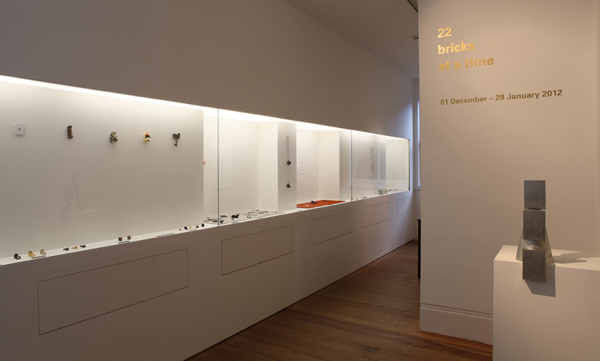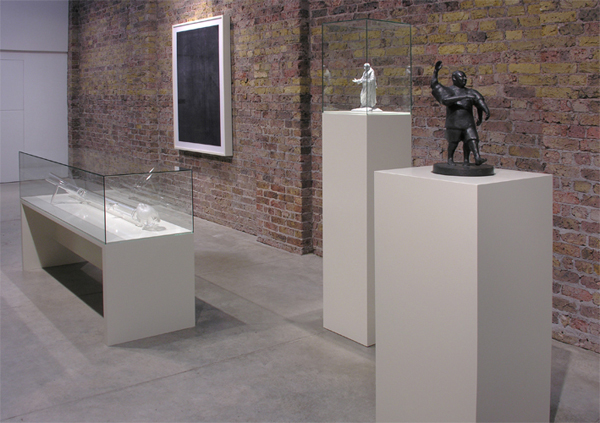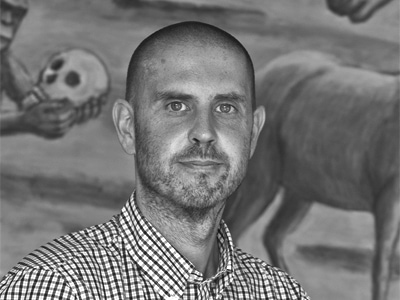Galleries exhibiting jewelry are an important part of our community and the people who run them have interesting backgrounds and stories to tell. In this interview Felix Flurry from Galerie S O, with locations in Slothurn, Switzerland and London, England answered some questions posed by Damian Skinner.
Damian Skinner: You have two galleries, one in Solothurn, Switzerland, and one in London. Which came first, and what made you decide to open the second one?
Felix Flurry: I opened the gallery in Solothurn first in 2003. Thanks to my time in London where I studied at the Sir John Cass Faculty of Art, now the Metropolitan University (silversmithing) and at the RCA (MA in Metalwork and Jewelry) I gained or maintained a strong link with London. I started to participate at Collect in 2005 and later I thought that maybe I should take the risk to start a gallery here in London. That idea was realized in 2009.
Does each gallery have a different kind of audience? Do you change what kind of jewelry you show depending on whether the audience is Swiss or British?
I show mainly the same people here in Solothurn and in London. The audience differs because in Solothurn there are mainly people interested in art or in design. In London the applied art community is much stronger.
What is it about contemporary jewelry that keeps you interested in representing it as a dealer?
It is my passion that contemporary jewelry should have more recognition as an art form. I want to open a window for a new experience of creativity. It is good for you!
How do you explain to someone who doesn’t know anything about contemporary jewelry what exactly it is that you sell in the gallery?
It’s a great pleasure to realize how things are made, what the artist’s motivation and intention is and how little things can bring different sorts of value to the consumer.
What are the three most interesting pieces of jewelry you’ve seen lately?
Something which really touched me lately is the show of Grayson Perry at the British Museum called The Tomb of the Unknown Craftsman. It isn’t jewelry but I think it was notable for the arrangement of objects with tradition and history against objects made today.

Damian Skinner: You have two galleries, one in Solothurn, Switzerland, and one in London. Which came first, and what made you decide to open the second one?
Felix Flurry: I opened the gallery in Solothurn first in 2003. Thanks to my time in London where I studied at the Sir John Cass Faculty of Art, now the Metropolitan University (silversmithing) and at the RCA (MA in Metalwork and Jewelry) I gained or maintained a strong link with London. I started to participate at Collect in 2005 and later I thought that maybe I should take the risk to start a gallery here in London. That idea was realized in 2009.
Does each gallery have a different kind of audience? Do you change what kind of jewelry you show depending on whether the audience is Swiss or British?
I show mainly the same people here in Solothurn and in London. The audience differs because in Solothurn there are mainly people interested in art or in design. In London the applied art community is much stronger.

What is it about contemporary jewelry that keeps you interested in representing it as a dealer?
It is my passion that contemporary jewelry should have more recognition as an art form. I want to open a window for a new experience of creativity. It is good for you!

It’s a great pleasure to realize how things are made, what the artist’s motivation and intention is and how little things can bring different sorts of value to the consumer.
What are the three most interesting pieces of jewelry you’ve seen lately?
Something which really touched me lately is the show of Grayson Perry at the British Museum called The Tomb of the Unknown Craftsman. It isn’t jewelry but I think it was notable for the arrangement of objects with tradition and history against objects made today.




